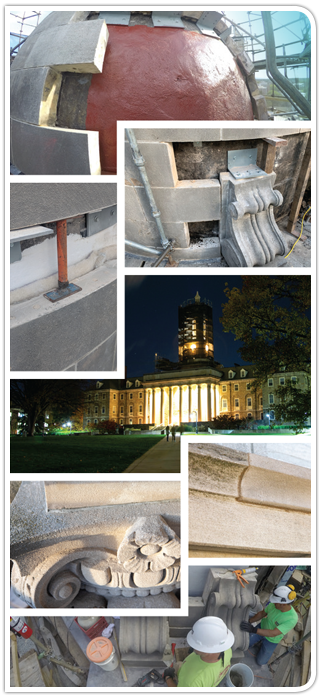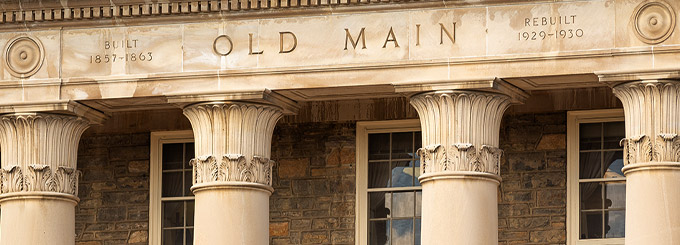Penn State University Old Main
University Park, Pennsylvania
Limestone Restoration
Project Background
- The original building was built between 1857 and 1859 as the Farmers High School of Pennsylvania; it was damaged by fire in 1892 and then remodeled
- The building and bell tower seen today are the result of a razing effort in 1929 to utilize original materials in a complete redesign and construction
- The existing Old Main bell tower is comprised of locally quarried limestone, and rises 79 feet from lower landing to the top of the lantern
- MPS was commissioned to repair and restore the limestone, waterproofing, and other decorative elements to preserve the bell tower while extending its service life
Project Challenges
- Project required the tallest scaffold ever built on campus
- Building needed to remain fully operational during the preservation process, requiring exterior access from the ground; work areas were extremely confined
- Limestone inventory was required during removal to ensure identical layout of stone during reinstallation
- Maintaining the look of limestone patina/soot from the old coal burning furnaces required a custom anthracite treatment after cleaning to match the building appearance that has become iconic to millions of university alumni
Project Approach
- A smooth project process was made possible through advanced working relationships with Wiss, Janney, Elstner Associates (WJE); the Penn State Office of the Physical Plant; Barton Malow; and the University Architect
- Extensive scaffolding and netting/protection was installed to safely access work areas while protecting the remaining portions of the building
- Repairs included provisions for through-wall flashing and anchorage of all limestone components in accordance with building codes

“The team at MPS always goes the extra mile on our projects in order to help us achieve the best results on our most important restoration projects. They help us determine the most historically appropriate and technically sound solutions to the challenges that these projects present.”
Greg Kufner, AIA NCARB
University Architect, Planning, Design & Properties
The Pennsylvania State University
